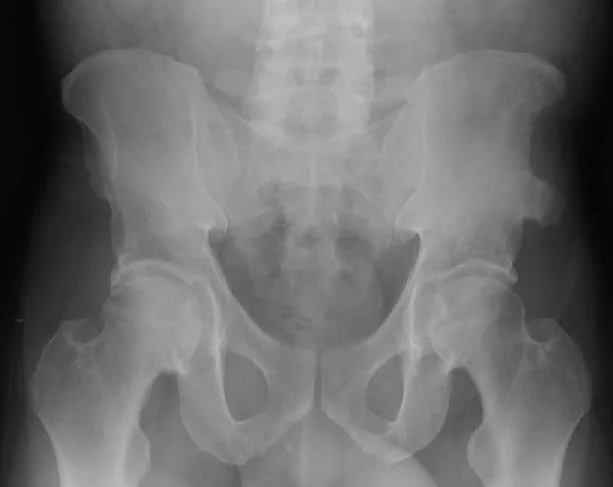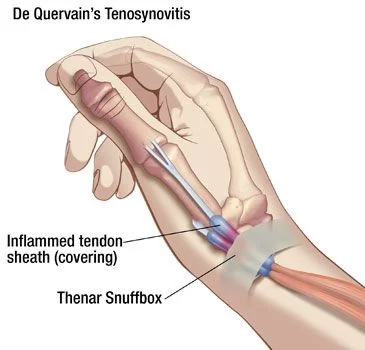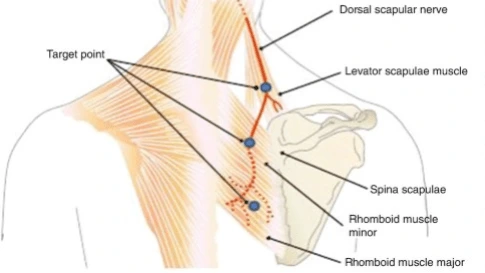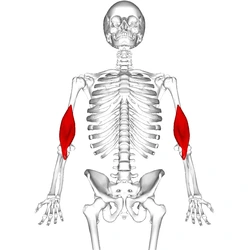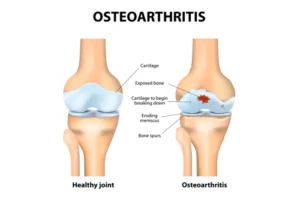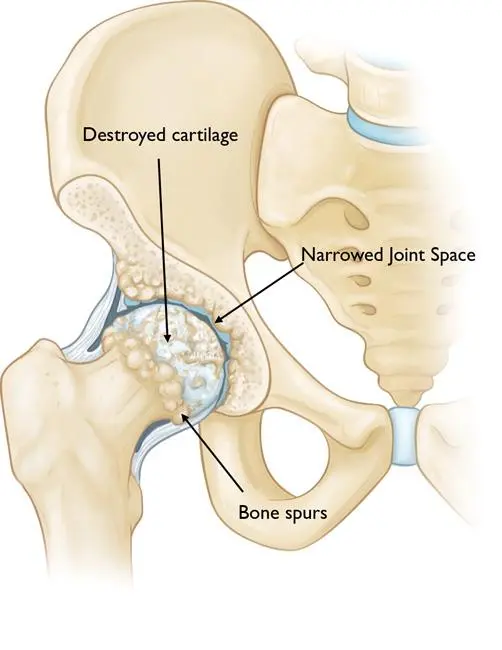Avulsion Fracture
What is an Avulsion Fracture?
Avulsion fractures occur when a small fragment of bone that is connected to a ligament or tendon separates from the main body of the bone. Tendons attach muscles to bones, whereas ligaments stabilize your bones, joints, and organs.
When you have an avulsion fracture, a piece of broken bone travels with your tendon or ligament in one direction while your bone moves in the other. This usually occurs when you abruptly alter course.
Young athletes are typically the victims of avulsion fractures. You may be hitting, sliding, sprinting, or engaging in other sports involving rapid motions and abrupt direction changes. A fragment of bone separates from the main body of the bone and is linked to a ligament or tendon. You may not heal completely for up to 12 weeks.
Any bone that is attached to a ligament or tendon may suffer an avulsion fracture. The following bones are most vulnerable to an avulsion fracture:
- Elbow bones.
- Ankle and foot bones.
- Knee bones.
- Finger and wrist bones.
- Pelvis and hip bones.
- Spine bones.
Are avulsion fractures serious?
You may be wondering if your injury warrants a trip to the emergency room. It can be challenging to determine whether your symptoms require immediate attention. However, fractures of any kind, even avulsion fractures, are dangerous. In case you believe you may have broken a bone, take care of yourself and go to the emergency room. Receiving medical care from a professional team guarantees that you’ll recover securely and resume your normal activities.
Avulsion fractures affect whom?
Avulsion fractures are common among athletes and performers, including skiers, football players, ballet dancers, and gymnasts. Their actions could involve numerous abrupt direction changes, leaps, and kicks.
avulsion fractures, on the other hand, can happen to anyone, with symptoms resembling sprains, like a twisted ankle.
Avulsion fractures hurt, but so does being unable to participate in your beloved hobby or play your chosen sport. Inform your healthcare practitioner if you believe you are experiencing problems with your emotional or mental well-being.
Symptoms and Causes
What causes avulsion fractures?
Sports like boxing, and hockey, for example, are at the risk of avulsion fractures. It’s because sports involve movements that stress your limbs, such as:
- Suddenly changing direction.
- Sprinting.
- Kicking.
- Leaping.
- Falling on an outstretched hand.
- quickly slowing down or abruptly accelerating (becoming faster).
- Hitting, as in a boxer
Symptoms of Avulsion Fracture
The following are the most typical signs of avulsion fractures after abrupt, intense pain:
- Bruising.
- Swelling.
- Muscle pain.
- A popping or cracking sound.
- pain that travels to other body areas.
- If the broken bone is in or close to your leg, you may be limped or unable to walk.
Diagnosis and Tests
How are avulsion fractures diagnosed?
Your injuries will be discussed with you by the emergency department’s medical staff. To assist with the diagnosis of your avulsion fracture, they will assess you and ask you questions. They will examine the afflicted area and check your ability to move your bones. Imaging examinations may then be necessary to have a closer look. Possible tests include:
X-rays are taken to examine your joints and bones.
Use a computed tomography (CT) scan to see your organs and soft tissues in greater detail as well as your bones and joints. In cases where X-rays are unclear, this is done.
What inquiries might a medical professional make in order to identify avulsion fractures?
When you arrive at the emergency room, your medical professionals should inquire. For the purpose of providing you with the finest care possible, they want to know everything that happened to you.
Questions might include:
When were you injured?
How did you get injured?
What are your symptoms?
Did you hear something break?
What medications do you take?
Treatment of Avulsion Fracture
How are fractures from avulsions treated?
The type of avulsion fracture and which bone broke determine the course of treatment. Generally, therapy for an avulsion fracture includes:
- immobility with a splint or cast.
- drugs that reduce inflammation.
- Restriction of activities.
- icing the region.
- Physical rehabilitation includes exercises.
Your healthcare physician may suggest range-of-motion (ROM) exercises under the supervision of a physical therapist once the discomfort is gone.
Occasionally, severe injuries resulting in joint instability require surgery.
How do bones heal?
- Our body surrounds the fracture with a callus and a blood clot A clump of blood that resembles a gel rather than a liquid is called a blood clot. The callus replaces the clot once it has formed. First, the clot forms, and then the callus takes its place. This protects the broken bones.
- New bone cells are produced by the shattered bone as well as the main bone. Like grasping hands, the cells expand into “threads” that extend outward and toward one another. The threads absorb the callus. The chunk of bone that separates from the main bone gets reattached to its place.
Who needs surgery for an avulsion fracture?
However, let’s say you have an injury, where the bone that is connected to the tendon or ligament is separated from the main bone by more than two centimeters. Your surgeon should do one of two procedures:
That’s why it’s critical to align and protect them right away (a cast does cartilage that resembles ridges on your bones begin to heal as soon as they break just that Your avulsion fracture should heal in a few easy steps.
Open reduction: The orthopedic surgeon makes a cut in your affected body parts and then realigns your bones.
Internal fixation: The surgeon will use metal hardware to permanently realign your bones. Hardware includes items such as plates, screws, rods, and pins.
Will I be asleep during surgery?
The best technique, such as regional anesthesia like an epidural or general anesthetic, will be administered by your anesthesiologist.
How long does it take to recover avulsion fracture?
You may be required to wear a cast for a few weeks until the bones are healed. A fracture usually takes three to twelve weeks to heal completely.
A brief period of rest followed by crutches is beneficial for an avulsion fracture in your pelvis or any other location where your healthcare professional is unable to put a cast. After a few weeks, your doctor may permit you to apply weight and, if it’s still manageable, to restart your sports activities.
Prevention
In what ways can I lower my chance of avulsion fractures?
- Although it is difficult to prevent avulsion fractures, you can reduce your risk.
- Athletes can lower their chance of suffering an avulsion fracture by taking the following beneficial measures:
- Stretch and warm up for five to ten minutes before practicing or participating in a game.
- You should be able to prevent any kind of injury by exercising caution.
Outlook / Prognosis
Can avulsion fractures get worse?
ignoring your doctor’s recommendations could cause your avulsion fracture to worsen.
Take extreme caution not to put any weight on the fracture until your doctor gives the all-clear
Can avulsion fractures come back after treatment?
In the same location, you can sustain another avulsion fracture. Decrease your risk by being proactive.
When ought I to visit my medical professional?
If you believe you may have a fracture, visit the emergency room. An avulsion fracture is a medical emergency that requires immediate attention.
What inquiries about avulsion fractures ought to I make of my healthcare provider?
You may have inquiries concerning avulsion fractures and your particular circumstance. You can better grasp what happened to you and what will happen next by asking questions.
When you visit your healthcare professionals, you may want to ask some of the following questions:
- Do I need to see a physical therapist?
- Should I consult a different kind of specialist?
- For what duration must I wear a cast?
- How long do I take rest?
- When can I start using crutches?
- When can I play sports again?
- When can I start using the clutches again?
- When can I perform again?
Conclusion
Avulsion fractures are dangerous injuries that may prevent you from participating in your preferred sports. You’ll require rest, a cast, and perhaps even surgery. For assistance, you should follow up with your medical professionals. They will collaborate with you to create a personalized care plan that will enable you to resume your normal activities.
FAQ
How much time does an avulsion fracture take to heal?
Usually, it takes six weeks for this injury to heal. Pain and Swelling: Take analgesics exactly as directed. Elevating the affected area will aid, as edema is often greatest at the end of the day.
How much time does an avulsion fracture take to heal?
Usually, it takes six weeks for this injury to heal. Pain and Swelling: Take analgesics exactly as directed. Elevating the affected area will aid, as edema is often greatest at the end of the day.
How much time does an avulsion fracture take to heal?
Usually, it takes six weeks for this injury to heal. Pain and Swelling: Take analgesics exactly as directed. Elevating the affected area will aid, as edema is often greatest at the end of the day.
After a fractured avulsion, do you require physical therapy?
Early weight bearing and return to play after avulsion injuries are greatly aided by physiotherapy. Minimizing pain and swelling is the first priority after an avulsion fracture. This means that in order to promote bone healing, ice, compression, and enough rest are needed.

